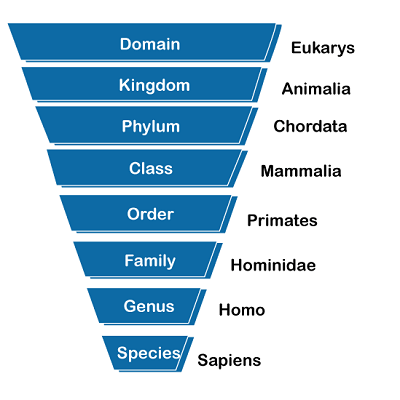Taxonomy DefinitionTaxonomy is the science of identifying, classifying, and naming organisms based on their characteristics and relationships. Taxonomists use various methods to organize and categorize living things, including physical traits, genetic information, and evolutionary history. The field of taxonomy has evolved over time, and today, it plays a critical role in helping us understand the diversity of life on Earth. 
History of TaxonomyThe earliest efforts to classify organisms can be traced back to ancient Greece, where philosophers such as Aristotle and Hippocrates attempted to categorize plants and animals based on their physical characteristics. However, the first comprehensive system of taxonomy was developed in the 18th century by Swedish botanist Carl Linnaeus. Linnaeus's system, known as binomial nomenclature, assigned each species a unique two-part Latin name consisting of its genus and species. Linnaeus's system was groundbreaking because it allowed scientists to communicate more effectively and accurately about different species. However, it was also limited because it relied solely on physical characteristics, rather than genetic information or evolutionary relationships. In the following centuries, taxonomists continued to refine their methods and incorporate new sources of data into their classification systems. Modern TaxonomyToday, taxonomists use a range of tools and techniques to classify organisms. One of the most important is molecular phylogenetics, which uses genetic data to trace the evolutionary relationships between species. By comparing DNA sequences, taxonomists can identify genetic similarities and differences between organisms and use this information to construct evolutionary trees that illustrate how different species are related. Another important tool in modern taxonomy is cladistics, which uses shared characteristics to group organisms into clades. Clades are groups of organisms that share a common ancestor, and cladistics seeks to identify these groups based on specific physical characteristics. For example, all mammals share certain traits, such as the presence of hair and mammary glands, and these shared traits are used to classify them as a clade. Taxonomists also use a variety of other criteria to classify organisms, including geographical distribution, behavior, and ecological niches. For example, two species of fish may look very similar, but one may live in freshwater streams while the other lives in saltwater oceans. This difference in habitat is an important factor in their classification. Importance of Taxonomy
Challenges and ControversiesDespite its many benefits, taxonomy is not without its challenges and controversies. One of the biggest challenges is the sheer number of species that exist on Earth. It is estimated that there are anywhere from 5 million to 100 million different species on our planet, and many of these have yet to be identified and classified. Another challenge is the difficulty of identifying and classifying organisms that are similar in appearance but genetically distinct. This can be especially problematic in cases where different species of plants or animals are used for food, medicine, or other purposes, as misidentification can lead to serious health risks. Finally, taxonomy is sometimes controversial because it requires scientists to make subjective judgments about which characteristics are most important for classifying different species. For example, some taxonomists may prioritize physical characteristics over genetic information, while others may place more weight on ecological factors or behavior. These differences in approach can lead to disagreements about how to classify certain species or how to construct evolutionary trees. In addition to these challenges, there are also controversies surrounding certain aspects of taxonomy. One of the most contentious issues is the use of common names versus scientific names. Common names are often more accessible to the general public, but they can also be confusing and inconsistent, as different regions or cultures may use different names for the same species. Scientific names, on the other hand, are standardized and universally recognized, but they can be difficult for non-experts to remember or pronounce. Another controversial issue is the use of certain taxonomic categories, such as subspecies or varieties. Some taxonomists argue that these categories are unnecessary or arbitrary, while others believe that they are important for accurately representing the diversity within certain species. Finally, taxonomy can also be controversial because of its historical associations with colonialism and Eurocentrism. Many of the early taxonomic systems were developed by European scientists who imposed their own cultural biases and assumptions on their classification schemes. Today, many taxonomists work to overcome these biases and incorporate diverse perspectives into their research. ConclusionTaxonomy is a complex and constantly evolving field that plays a critical role in our understanding of the natural world. By identifying and classifying different species, taxonomists are able to create a comprehensive picture of the diversity of life on Earth and to better understand the relationships between different organisms. While there are challenges and controversies associated with taxonomy, its benefits are clear, and it remains an essential tool for scientists working to understand and conserve the natural world.
Next TopicTorque Definition
|
 For Videos Join Our Youtube Channel: Join Now
For Videos Join Our Youtube Channel: Join Now
Feedback
- Send your Feedback to [email protected]
Help Others, Please Share










